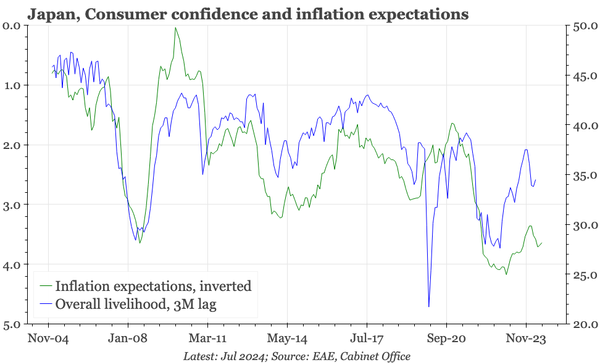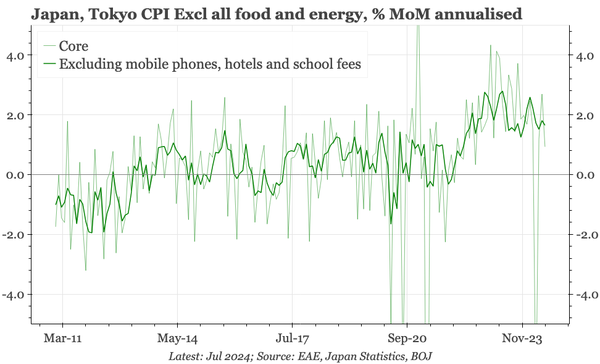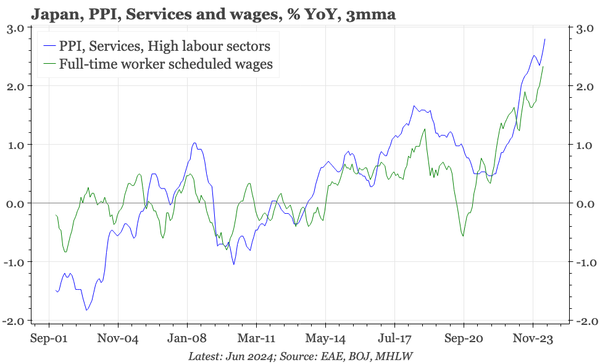
Paul Cavey
Korea – taking stock
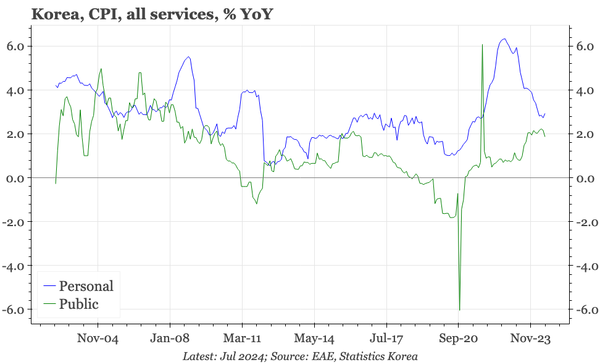
Particularly if US policy action reflects a weaker economy, the BOK will likely cut if the Fed does. However, with the rebound in home price inflation that has been a focus for the BOK, and tentative signs of an upturn in services prices that so far hasn't, the BOK likely won't be in a rush.
QTC: Korea – rebound in services inflation
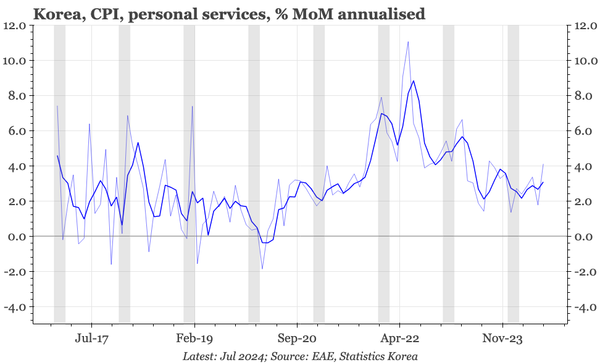
Services inflation had already bottomed at above 2%, and now it looks to be trending up again. As a big component of domestically-generated inflation, a rise in services inflation will make it much more difficult for core and thus overall inflation to stay at the BOK's 2% target.
Japan – confident on services prices, less so on SME wages
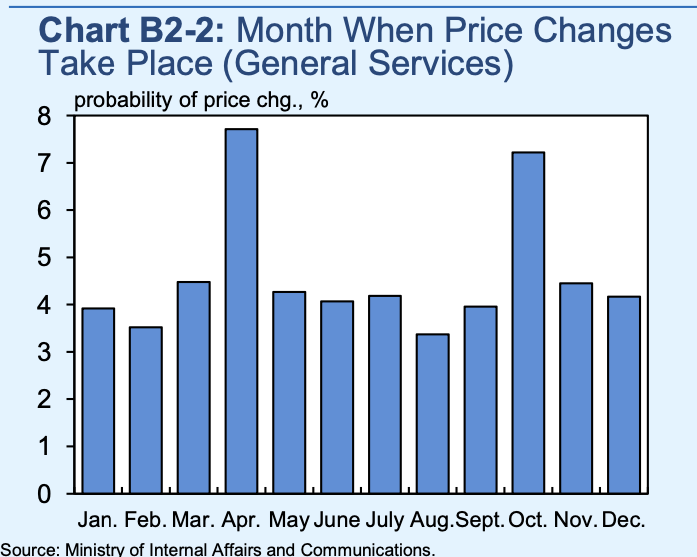
In its full outlook report, the BOJ sounds confident on services prices and wages at larger firms. It is less certain about wage rises at SMEs. Developments at smaller firms, and service price hikes in the traditional (but long-forgotten) price setting month of October, will be important to monitor.
QTC: Korea – export growth can't get over 10%
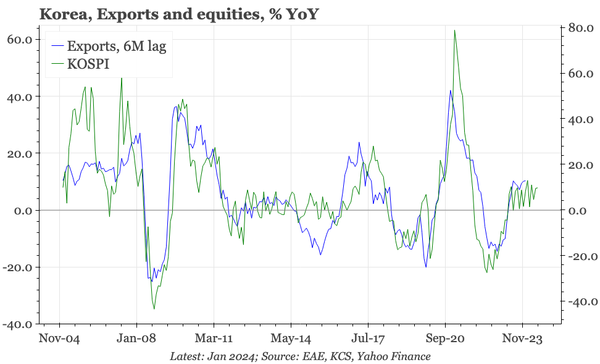
It looks increasingly likely that Korean export growth has stalled. Exports grew by around 10% a year each month in the first half of 2024, and equities are pricing a similar rate of expansion in the second. That's not much when the domestic cycle remains weak.
QTC: China – S&P/Caixin mfg PMI down too
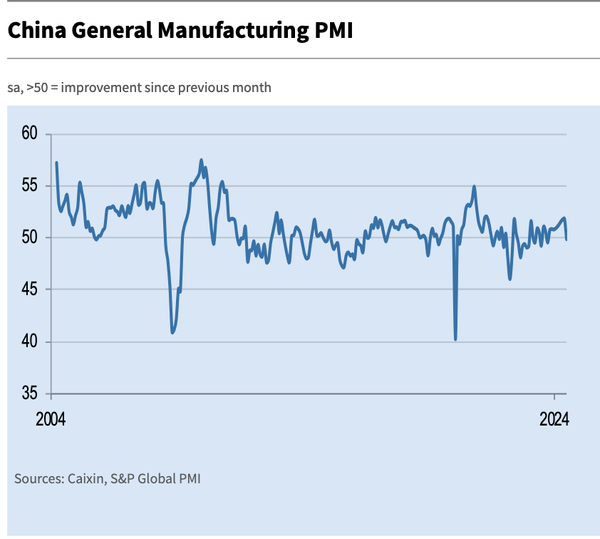
After the August PMIs, there's less room to think the economy is continuing to muddle through. Until now, the weakness of the official mfg PMI has been offset by strength in the Caixin version. Today's fall closes that gap, suggesting that even sectoral bright spots are now dimming.
QTC: Taiwan – domestic demand drivers Q2 growth
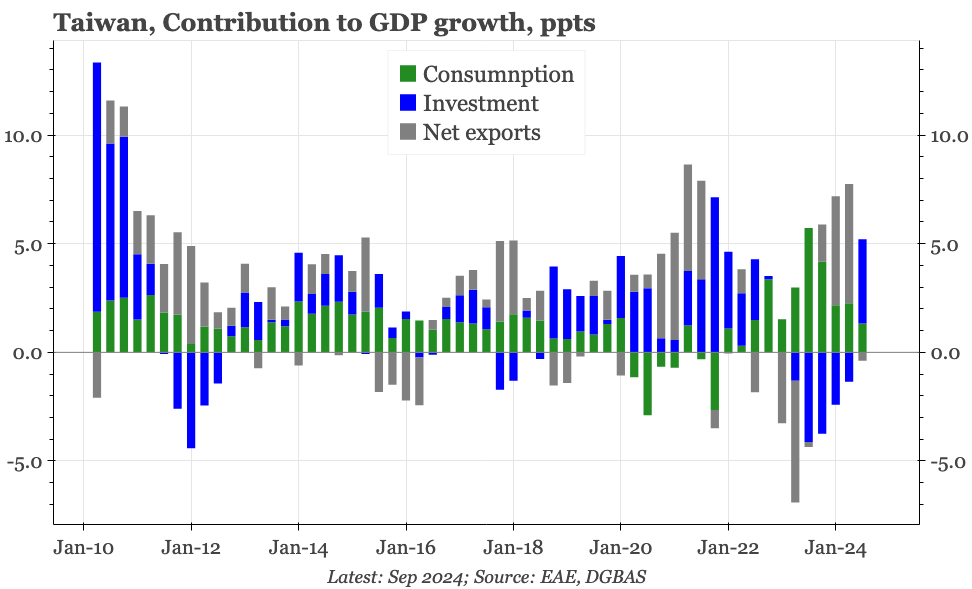
Although mainly as capex, exports are feeding into domestic demand in Taiwan in a way that isn't yet visible in Korea. Data today show three-quarters of the 5.1% YoY rise in GDP in Q2 coming from investment, with the remainder being consumption. The contribution from net exports turned negative.
QTC: Korea – standout weakness in retail sales
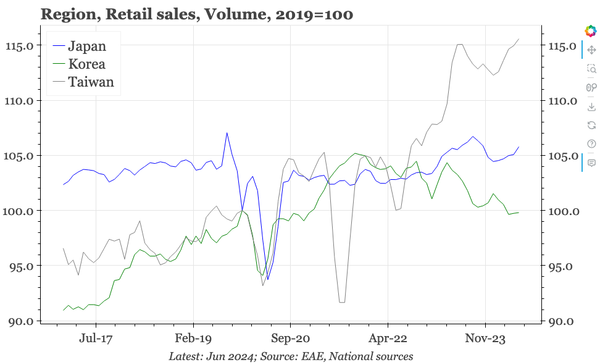
The weakness of retail sales in China and Japan is well-known. Less appreciated is the same theme is true in Korea too, with today's June volume data dropping back to 2019 levels. Only in Taiwan do retail sales show any strength, which is important when Taiwan's export story is the strongest too.
China – no cycle momentum
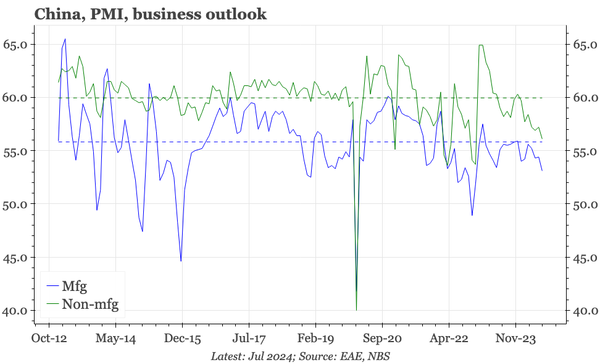
Our China cycle framework is that the muddle through of the last 18M is running out of road. The July PMIs look consistent with that, with weakness in pricing, jobs and confidence. The one remaining contrary indicator is the S&P mfg PMI, which has been strong, and for July will be released tomorrow.
QTC: Japan – hard labour market data not as tight as soft

As has been the case for months, hard data show no big change in the labour market: UE is low, and employment high. But the BOJ seems to think the labour market is tighter than these data suggest, placing more weight on the bigger change shown by the Tankan.
QTC: Taiwan – some price relief for consumers
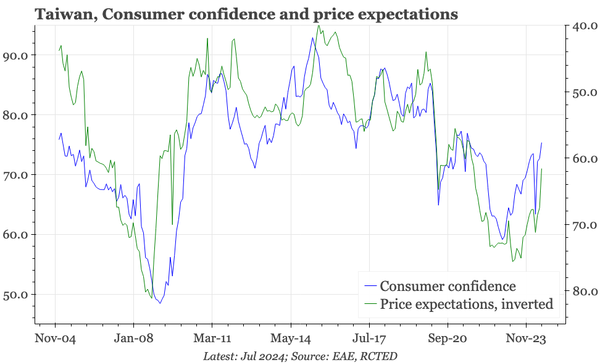
At least through July, softening inflation has been making consumers feel happier. Likely, the recent typhoon damage will at least cause a pause. And while the price slowdown in theory helps the CBC, there's also the risk of aggregate demand remaining stronger for longer.
Japan – taking stock
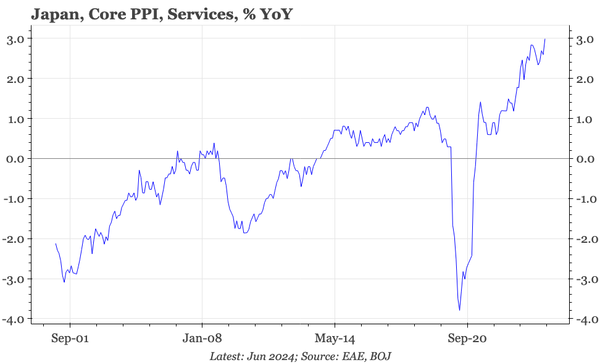
The BOJ became more positive in 1H24, and labour market and price data since should have increased confidence further. So we think the bank hikes next week, with a probability of 60%. That our conviction isn't stronger still is because of the implications of the June non-decision on JGB purchases.
QTC: China – is this really export of deflation
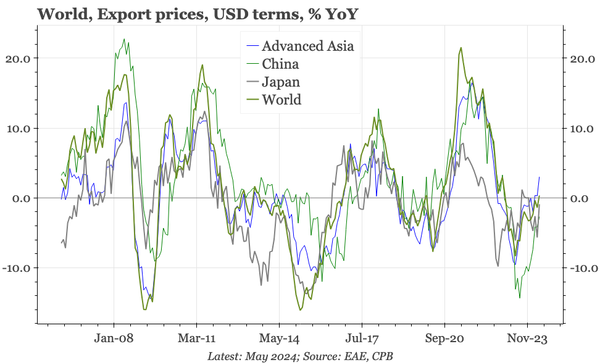
The CPB data do show that China's export price cycle is somewhat weaker than ROW. But the gap isn't that big, and the trend is similar. Particularly in the context of all the talk of over-capacity, the differences really don't look that big.
Korea – export recovery, domestic weakness

Recent data suggest an unchanged macro story: a slow moderation in inflation and a weak domestic economy, but export and property recoveries. The first two dynamics point to an interest rate cut, but the second two suggest that still isn't imminent.
QTC: China – industrial prices stable despite property
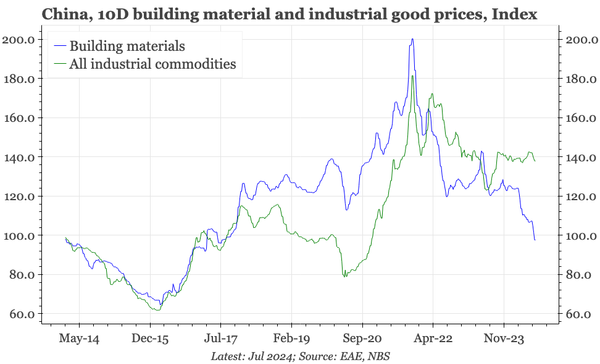
The collapse in property market activity is showing up in sharply lower prices for building materials: they've now fallen by 50% from the peak. But overall industrial prices haven't fallen in the same way, and continue to point to PPI inflation of around 0%.
QTC: Japan – services PMI stronger again

Some lessening of confidence in June made sense given the fall in the JPY, but last month's sharp drop in the services PMI still seemed overdone. In July, it rebounded back to a strong level, with the commentary highlighting rising employment and capacity pressures.


